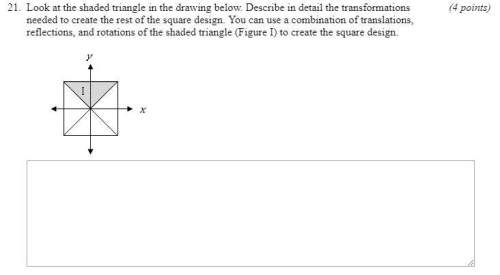
Mathematics, 05.06.2020 23:02 quan91
A researcher wished to compare the effect of the frequency of the rate of stepping on heart rate in a step-aerobics workout. A collection of 30 adult volunteers, 15 women, and 15 men was selected from a local gym. The men were randomly divided into three groups of five subjects each. Each group did a standard step-aerobics workout with group 1 at a low rate of stepping, group 2 at a medium rate of stepping, and group 3 at a rapid rate. The women were also randomly divided into three groups of five subjects each. As with the men, each group did a standard step-aerobics workout with group 1 at a low rate of stepping, group 2 at a medium rate of stepping, and group 3 at a rapid rate. The mean heart rate at the end of the workout for all subjects was determined in beats per minute. A partial ANOVA table for these data is given below. Analysis of variance for heart rate:SourceDFSSMSFPStep rate2553.2Gender70.7Group*gender231 .7.48.623Error5762.0Total8617.612. The factors in the experiment are:A) rate of stepping and heart rate. B) rate of stepping and gender. C) heart rate and gender. D) gym membership and gender.13. The advantages of studying the two factors, gender and stepping rate, in the same experiment are:A) it is more efficient to study two factors simultaneously rather than separately. B) we can reduce the residual variation in a model by including a second factor thought to influence the response. C) we can investigate the interaction between factors. D) all of the above.14. The degrees of freedom for error are:A) 5B) 11C) 24D) 2915. The pooled standard error isA) 15.5B) 75.9C) 240.1D) 5762.016. Using the information in the ANOVA table and the example description, the degrees of freedom for interaction areA) 1B) 2C) 3D) 617. The plots and the P-value for the test for interaction show little evidence of interaction. This means thatA) there is little difference in the heart rates of men and women. B) the change in heart rate due to the different stepping rates are similar for men and women. C) changes in stepping rate are positively associated with heart rate. D) step exercise is equally beneficial to men and women.18. The numerical value of the F statistic for the test for gender is:A)0.01B)0.29C) 5.32D) 81.4919. The numerical value of SSM, the sum of squares for the model, isA) 2553.2B) 2866.6C) 5762.0D) 8617.620. Using the information in the ANOVA table and the example description, the P-value for the test for the main effect of step rate isA) less than 0.01.B) between 0.01 and 0.05.C) between 0.05 and 0.10.D) greater than 0.10.

Answers: 2


Other questions on the subject: Mathematics

Mathematics, 21.06.2019 18:30, Jenniferwolf
Ametal rod needs to be 9 feet and 5.5 inches in length. the sections of the poles being used are each 1 foot and 10.5 inches long. how many 1ft 10.5in sections would be needed to complete the 9ft 5.5in metal rod? and how many inches of material will be left?
Answers: 1


Mathematics, 21.06.2019 20:30, Korkot7633
Which inequality statement describes the two numbers on a number line? "? 7 and a number 5 units to the right of ? 7"
Answers: 2
You know the right answer?
A researcher wished to compare the effect of the frequency of the rate of stepping on heart rate in...
Questions in other subjects:


English, 12.05.2021 14:00

Mathematics, 12.05.2021 14:00



Chemistry, 12.05.2021 14:00


History, 12.05.2021 14:00

English, 12.05.2021 14:00





